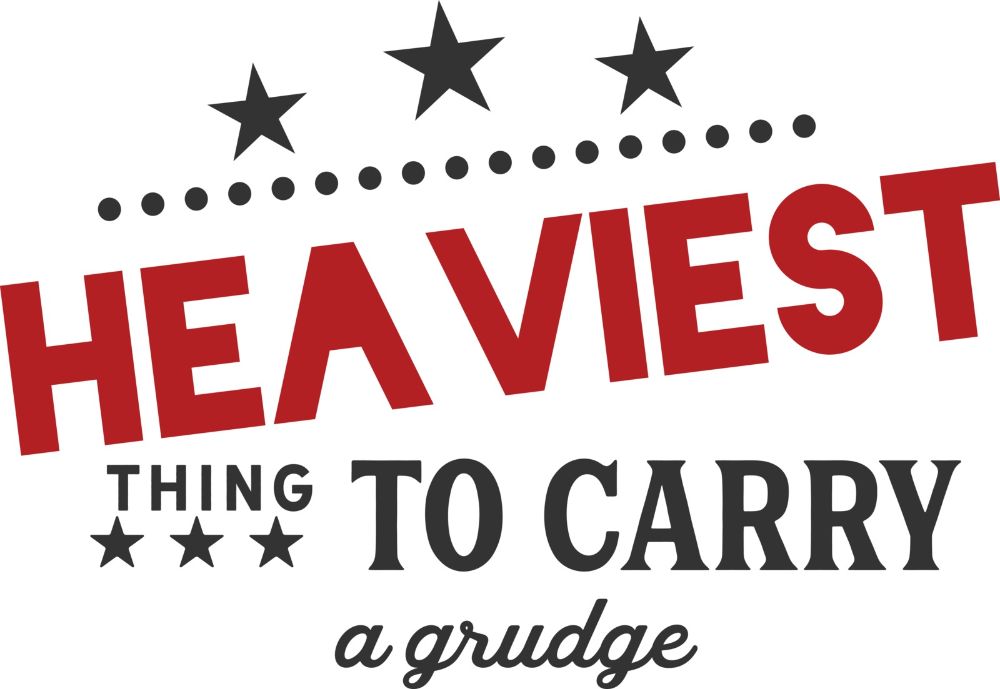Revealing the History of the Handshake Hypnosis Induction
Origins of Handshake Hypnosis Induction
The handshake hypnosis induction technique traces its roots back to the late 19th century. Early hypnotists explored various methods to bypass the conscious mind. This led to an innovative use of the common handshake. Influential figures like Milton Erickson significantly contributed to its development. Erickson's nuanced understanding of human psychology allowed him to refine the technique. He demonstrated its effectiveness by inducing trance states subtly.
The early beginnings of this method involved experimentation and observation. Hypnotists discovered that interrupting a routine action, like a handshake, created a moment of suggestibility. This groundwork laid the foundation for later advancements. Thus, the handshake became a powerful tool in hypnotic practices.
Early beginnings of handshake induction
The early beginnings of handshake hypnosis induction date back to the late 19th century. Innovators in hypnotism were conducting experiments to find effective techniques. They noted how interrupting a common action like a handshake could cause momentary confusion. This confusion created an opportunity to bypass the conscious mind. The method began as a simple observation of human behavior. Over time, it evolved into a subtle yet powerful hypnotic tool. Early practitioners like James Braid laid the groundwork for this technique. Their understanding of suggestibility and psychological principles was foundational. Thus, the handshake hypnosis method started taking shape as an influential practice in hypnotic circles.
Influential figures in the development of handshake hypnosis
Milton Erickson stands out as a key figure in handshake hypnosis induction. His innovative approach revolutionized hypnotic techniques. He observed subtle cues and movements during handshakes. These insights allowed him to develop intricate methods of inducing trance states. Another notable contributor is Richard Bandler. Co-founder of Neuro-Linguistic Programming (NLP), Bandler expanded on Erickson's methods. He brought greater structure and understanding to the practice. Dave Elman also played a significant role. Known for rapid induction techniques, Elman’s work provided a practical framework. Together, these pioneers laid the foundation for modern handshake hypnosis. Their combined efforts have significantly shaped contemporary hypnotic practices.
The Mechanics of a Handshake Hypnosis Induction
Understanding the psychological principles behind handshake hypnosis is essential. It relies on disrupting a routine gesture, such as a handshake. This interruption catches the subconscious off guard, creating a moment of confusion. In that brief moment, the mind becomes more open to suggestions. A step-by-step process typically involves establishing a handshake, initiating the confusion, and then smoothly delivering the hypnotic suggestion. Practitioners often use subtle cues and timing to achieve the desired trance state. Precision in these actions is crucial. By carefully orchestrating this sequence, a skilled hypnotist can efficiently guide a subject into hypnosis. This technique blends psychology with physical interaction to achieve effective results.
Understanding the psychological principles behind handshake inductions
The psychological principles behind handshake hypnosis focus on the element of surprise. By breaking the subject's expected pattern, the hypnotist creates a momentary state of confusion. This confusion disarms the conscious mind, making it more susceptible to suggestion. The key lies in exploiting this brief lapse in cognitive processing. When routines are disrupted, it triggers a natural, subconscious response. This response allows the hypnotist to bypass critical thinking. The approach capitalizes on the mind's tendency to follow familiar sequences. When these sequences are disrupted, the subconscious seeks guidance. Consequently, this creates optimal conditions for introducing hypnotic suggestions seamlessly. Understanding these principles is essential for effective hypnosis practice.
Step-by-step process of conducting a handshake induction
The handshake hypnosis technique begins with a casual interaction. The hypnotist approaches the subject with a friendly demeanor. The handshake is initiated as usual, but midway, the hypnotist disrupts the expected pattern. This might involve an unexpected gesture or a sudden break in eye contact. The subject experiences a brief moment of confusion. During this interval, the hypnotist introduces a hypnotic suggestion covertly. The key is the hypnotist's timing and the ability to maintain rapport. As the handshake concludes, the subject's subconscious mind absorbs the suggestion, often without conscious awareness. This method requires precision and practice to ensure effectiveness and ethical application.
Controversies Surrounding the Handshake Hypnosis Induction
The handshake hypnosis induction technique is wrapped in debate. Ethical considerations arise due to potential misuse. Critics argue it can manipulate individuals without consent. There is also skepticism about its effectiveness. Some professionals question its scientific validity, citing limited empirical evidence. The rapid induction method faces criticism for its unpredictability. It requires a high degree of skill to execute properly, leading to concerns about untrained practitioners causing harm. Despite these controversies, proponents highlight its potential benefits in therapy. They advocate for more controlled studies. This ongoing debate underscores the need for ethical guidelines and rigorous scientific investigation in the field of hypnosis.
Ethical considerations in the practice of handshake hypnosis
The practice of handshake hypnosis induction raises notable ethical concerns. The primary issue is the potential for non-consensual manipulation. Practitioners must ensure informed consent from participants. Additionally, there is a risk of psychological harm if the individual is not adequately prepared. Untrained individuals attempting this technique can exacerbate these risks. Ethical guidelines emphasize the need for thorough training and supervision. Misuse of this method could damage the credibility of the broader field of hypnosis. Therefore, it is paramount that those practicing handshake hypnosis adhere to strict ethical standards. This includes transparency with participants and a commitment to do no harm.
Debates on the effectiveness and validity of the handshake induction
Critics of handshake hypnosis induction question its effectiveness and scientific validity. Some argue that the rapid nature of this technique compromises the depth of the hypnotic state achieved. Skeptics highlight limited empirical research supporting its outcomes. While practitioners claim noticeable and quick results, these are often anecdotal rather than rigorously tested. Some psychologists doubt the method's consistency and reproducibility across different populations. The placebo effect is also a concern, as it may play a significant role in perceived successes. In contrast, proponents assert that their clinical experiences and qualitative data demonstrate its value. The debate continues, underscoring the need for comprehensive scientific evaluation.
Real-Life Applications of the Handshake Induction
Handshake hypnosis induction finds practical applications in various domains. In therapeutic settings, it is used to quickly place clients into a hypnotic state, aiding in treatments for anxiety, phobias, and stress relief. Clinicians value its rapid induction method, which minimizes client resistance and enhances therapeutic outcomes. Beyond therapy, this technique sees use in everyday interactions. It helps professionals in sales and negotiations by establishing rapport and trust instantaneously. Additionally, public speakers utilize handshake hypnosis to capture audience attention and maintain engagement. These versatile applications highlight the method’s adaptability across different contexts, proving its relevance in modern psychological practices and everyday life scenarios.
Implementation in therapeutic settings
Therapists utilize handshake hypnosis induction to swiftly guide clients into a hypnotic state. This efficiency allows for more time to address underlying issues such as anxiety, phobias, and chronic stress. With reduced resistance from clients, practitioners can achieve deeper levels of relaxation and suggestibility. Psychologists note its efficacy in trauma therapy, where clients often struggle with traditional methods. Handshake hypnosis also supports pain management, offering a non-pharmaceutical approach. Hypnotherapists find the technique valuable in smoking cessation programs and weight loss treatments, enhancing commitment. The approach harmonizes well with cognitive-behavioral therapies, providing a versatile tool for various psychological interventions.
Practical uses of handshake inductions in everyday interactions
Individuals often find handshake hypnosis useful in everyday settings. Business professionals use it to build rapport quickly and establish trust. In educational environments, teachers may apply subtle techniques to focus students' attention. Salespeople harness its persuasive power to create a favorable impression with clients. Additionally, healthcare workers might employ it to calm anxious patients before procedures.
For personal development, people utilize this method to enhance communication skills and reduce social anxiety. Within relationships, it helps in resolving conflicts more effectively by fostering openness. Lastly, public speakers benefit from handshake hypnosis to captivate audiences and convey their messages more compellingly. These applications underscore its versatility beyond therapeutic contexts.
Modern Adaptations and Variations of the Handshake Hypnosis Induction
Today's practices leverage technological advancements and new psychological insights. Practitioners now incorporate neuro-linguistic programming (NLP) techniques to enhance effectiveness. Innovations also include using virtual reality (VR) to simulate and practice hypnosis scenarios.
Some hypnotists blend traditional methods with mindfulness and meditation practices. This hybrid approach aims to deepen the induction experience. Additionally, there is a growing trend of online tutorials and courses, making training more accessible.
In therapeutic contexts, therapists combine handshake hypnosis with cognitive-behavioral therapy (CBT) for holistic treatment. These modern adaptations demonstrate a dynamic evolution, ensuring the technique remains relevant and effective.
Innovations in handshake induction techniques
Modern practitioners have introduced several innovations to enhance handshake hypnosis techniques. One significant advancement is the integration of neuro-linguistic programming (NLP). This combination heightens the hypnotic experience by anchoring specific words and gestures. Additionally, virtual reality (VR) technology offers immersive training environments for both practitioners and clients.
Another innovation is the blend of traditional hypnosis with mindfulness exercises. This hybrid approach aims to deepen relaxation and increase suggestibility. Online platforms now provide tutorials and courses, making learning more accessible. These advancements illustrate a dynamic evolution, ensuring handshake hypnosis techniques remain effective and relevant in contemporary practice.
Diverse approaches to performing handshake inductions
Modern practitioners employ various methods to execute handshake hypnosis effectively. Some prefer a direct approach, utilizing a firm yet non-threatening handshake to establish immediate rapport and induce a trance. Others favor more subtle techniques, often incorporating elements of body language and eye contact to enhance the hypnotic effect.
Interactive methods have also gained popularity, involving the subject in brief, engaging conversations to distract the conscious mind. This allows the hypnotist to guide the subject into a more suggestible state gently. Additionally, combining handshake hypnosis with deep breathing exercises has proven effective in optimizing relaxation and concentration. These diverse approaches underscore the adaptability and versatility of handshake hypnosis in various contexts.
Conclusion
Handshake hypnosis induction has a storied past, rich with innovation and adaptation. Tracing its roots reveals the influential figures who laid its foundations and the subsequent evolution through various techniques. The psychological principles underlying this practice are intriguingly complex, yet widely applicable.
In modern contexts, handshake hypnosis demonstrates versatility in both therapeutic environments and everyday interactions. Critique persists, but profound benefits continue to emerge. Ethical considerations and debates on efficacy prompt ongoing discourse within the field.
Future developments promise to further refine these methods. As research deepens, the potential for new applications grows. Handshake hypnosis remains a dynamic and evolving aspect of hypnotic practice, marked by its unique ability to bridge historical practices with contemporary needs.
Summary of the historical significance of the handshake hypnosis induction
Handshake hypnosis induction has a rich historical significance. It traces back to the early days of mesmerism. Pioneers like Milton Erickson and Richard Bandler played crucial roles in its development. These innovators recognized the power of indirect suggestions. They saw the potential of non-verbal cues in hypnotic practices. Their work laid the groundwork for modern applications.
The technique evolved to become a quick and effective induction method. Its simplicity makes it accessible to therapists and practitioners alike. The historical journey of handshake hypnosis highlights a blend of psychological insight and practical application. This journey underscores the dynamic nature of hypnotic practices through the ages.
Rob Perin, CCHT
Other Posts

